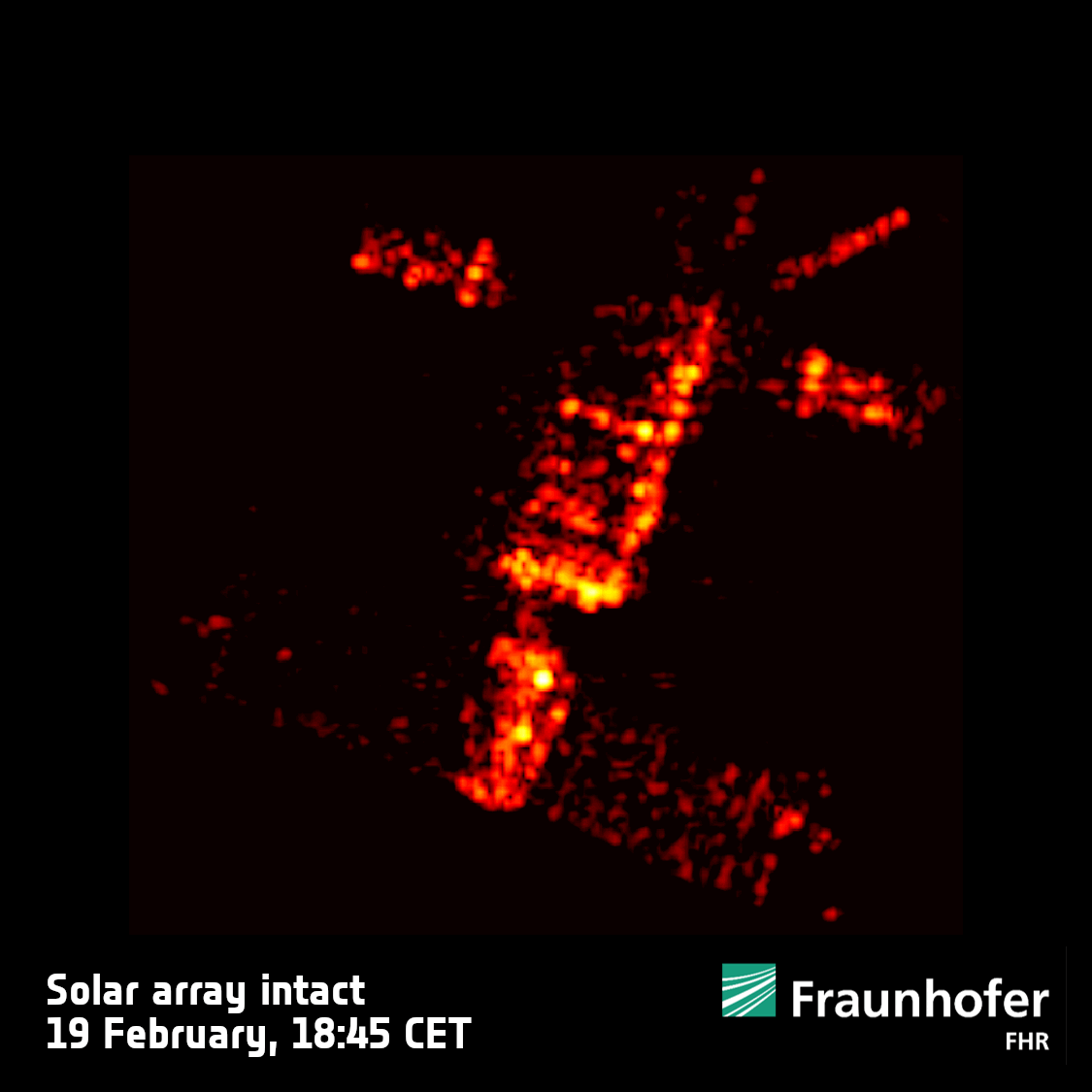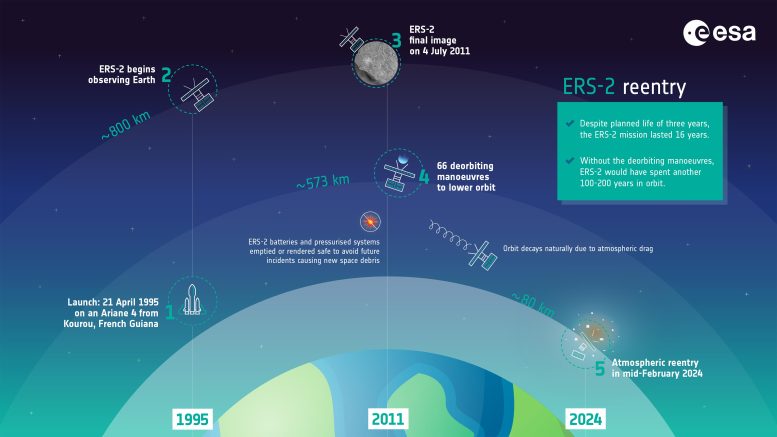
Fraunhofer FHR’s radar tracking of ESA’s ERS-2 satellite revealed crucial structural changes before re-entry, enhancing understanding of satellite disintegration and aiding in more accurate future predictions. Credit: Fraunhofer FHR
ESA’s ERS-2 satellite successfully reentered Earth’s atmosphere after nearly 30 years in orbit, with its final moments tracked by Germany’s Fraunhofer Institute. The unexpected detachment of its solar array provided crucial data for improving satellite reentry predictions.
Following a hugely successful mission and almost 30 years in orbit, ESA’s ERS-2 reentered Earth’s atmosphere at approximately 18:17 CET (17:17 UTC) on February 21, 2024.
Predicting the exact time and location of ERS-2’s natural reentry was made more difficult by the lack of new observations of the satellite during its final revolutions around Earth.
Tracking ERS-2’s Final Moments
This GIF combines some of the final images of ERS-2 tumbling through the sky. They were captured by the Tracking and Imaging Radar (TIRA) at the Fraunhofer Institute for High Frequency Physics and Radar Techniques FHR in Germany.
TIRA’s 34-m antenna tracked the satellite as it passed overhead for a few minutes on each of February 19, 20, and 21. The final session took place around 8:00 CET on February 21, still roughly 10 orbits before reentry.
Analyzing ERS-2’s Solar Array Detachment
By comparing the images from the three TIRA tracking sessions, we can see that ERS-2’s solar array was already coming loose and no longer firmly attached to the rest of the satellite the day before re-entry.
When predicting a satellite’s reentry trajectory, experts treat it as one rigid object until almost the very end. If ERS-2’s solar array was loose and moving independently a day early, it may have caused the satellite to interact with the atmosphere in ways we did not expect.
Experts are now analyzing the data. If the buckling of the solar array is related to the fact that ERS-2’s reentry took place slightly later than predicted, this research could help improve our forecasts of future natural reentries.
ESA thanks Fraunhofer Institute for High Frequency Physics and Radar Techniques FHR for providing measurements of their space observation radar TIRA, in close collaboration with the German Space Situational Awareness Center, GSSAC.
The color in these images represents radar echo intensity and not temperature.










Be the first to comment on "Advanced Radar Captures ERS-2 Satellite Buckling and Bending During Re-Entry"